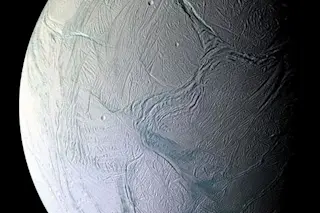Jupiter’s moon Europa has an icy shell that conceals a liquid water ocean. Now, scientists have made the first direct measurement of water vapor in Europa’s atmosphere. It’s the best evidence yet for a water plume erupting from the moon’s surface.
The measurements also imply that outside of plume events, Europa’s atmosphere likely has less water vapor overall than previously thought. The scientists describe their findings Monday in Nature Astronomy.
Scientists have known since the 1960s that Europa is home to water ice and, likely, a liquid water ocean beneath the surface. They predicted that radiation from Jupiter would bombard the moon’s icy surface and create water vapor.
And recent studies have turned up indirect evidence that erupting plumes inject water vapor into the moon’s atmosphere. Studies in the past decade have even spotted signs of hydrogen and oxygen in Europa’s atmosphere, but not water vapor directly.
In the new ...














